High-rep-rate petawatt laser readied for ELI action
source:Optics.org
release:Nick
keywords: Petawatt Laser Lasertel diodes
Time:2017-12-26
Commissioning of 'L3' beamline at giant Prague facility begins, with test operations slated for early 2018.
Engineers at the Extreme Light Infrastructure (ELI) Beamlines facility in Prague, Czech Republic, are in the process of installing four blocks of powerful laser diode units to complete construction of the “L3” line – a state-of-the-art laser system capable of delivering petawatt blasts at a rate of ten pulses per second.
Officially known as the High-repetition-rate Advanced Petawatt Laser System (HAPLS), the unprecedented light source was developed and built at Lawrence Livermore National Laboratory (LLNL) in California, before being shipped to Prague six months ago.
Lasertel diodes
Working alongside LLNL staff, the ELI team completed the physical installation of HAPLS earlier this month, connecting and commissioning critical cooling, vacuum, electrical and electronic systems.
once the Lasertel-developed diode sources are up and running, and delivering 800 kW pulses into the dual chirped pulse amplifier system, the full system will go into operation as the entire laser chain is tested.
And once those tests are completed, the L3 beamline should soon become available for initial user applications. ELI says that it is expecting the laser to serve as a compact particle accelerator for medical research, as well as a tool for laboratory-scale astrophysics studies, and a generator of short-wave X-rays for high-resolution spatial and temporal resolution microscopy.
“The initial experiments will be capable of taking images with resolution orders of magnitude better from what is seen in today's hospitals,” the ELI team reckons, with LLNL adding:
“In early 2018, the L3-HAPLS system's high energy pump laser will be gradually brought up to previous performance [demonstrated at LLNL], followed by ramping the petawatt beamline first in energy and then in average power.”
While other petawatt systems exist in various laser systems around the world, the most remarkable attribute of HAPLS is its ability to generate up to ten such powerful pulses every second.
That capability is a direct result of the diode pumping scheme, for which LLNL developed the world’s highest peak-power diode arrays and a specialized power system. The result is a pump laser delivering 200 Joule pulses at 10 Hz.
Beyond science
LLNL’s Constantin Haefner, who has overseen HAPLS development since LLNL and the Austrian ultrafast laser firm Femtolasers (since acquired by Newport and now part of MKS Instruments) were revealed as key contractors in early 2014, said in a statement from the US laboratory:
“L3-HAPLS is a quantum jump in technology. Not only did it allow LLNL to test and advance new laser concepts important for our mission as a national lab, it also is the first high-peak-power laser that can deliver petawatt pulses at average power - more than 1 megajoule per hour - entering the industrial application space.”
Haefner added that HAPLS innovations, including green diode-pumped solid-state laser technology, have since become commercial products. “[It’s] an important reminder that investment in laser technology spurs advancements in areas well beyond science,” he said.
Earlier this year Haefner told a Photonics West conference covering ultra-high-power laser facility developments that HAPLS represented a “watershed moment” for the community, saying to delegates: “HAPLS is the first petawatt laser to truly provide application-enabling repetition rates.”
While the L3 installation was previously held up for a few months by problems with floor vibrations at the giant Prague site, ELI Beamlines officials have viewed the development as a reasonably straightforward one.
They describe the state-of-the-art system as a “workhorse” beam, whose repetition rate should dramatically speed up user experiments previously restricted to up to only a handful of petawatt pulses per day on even the most sophisticated equipment.
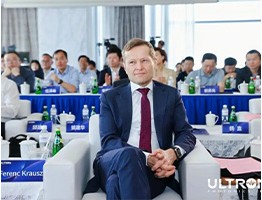 4th Collaboration! What Brought the Global Laser Academic Guru to Chinese Univs & Leading Firms?
4th Collaboration! What Brought the Global Laser Academic Guru to Chinese Univs & Leading Firms?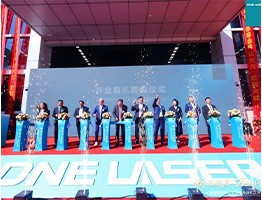 DNE Laser Foshan Smart Manufacturing Base Grand Opening: New Brand Image Starts New Journey
DNE Laser Foshan Smart Manufacturing Base Grand Opening: New Brand Image Starts New Journey Live: DMP GBA Expo – Laser Hard Tech Leads Industrial Smart Manufacturing New Wave
Live: DMP GBA Expo – Laser Hard Tech Leads Industrial Smart Manufacturing New Wave Scientists Develop Palm-sized Short-pulse Laser System: Efficiency Increased to 80%
Scientists Develop Palm-sized Short-pulse Laser System: Efficiency Increased to 80% Global LiDAR Giants Engage in Escalating Patent Wars
Global LiDAR Giants Engage in Escalating Patent Wars
 Shi Lei (Hipa Tech): Focus on Domestic Substitution, Future Layout in High-End Laser Micromachining
Shi Lei (Hipa Tech): Focus on Domestic Substitution, Future Layout in High-End Laser Micromachining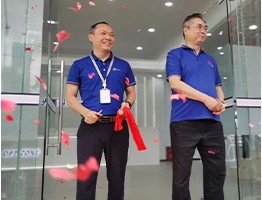 Optizone Technology: 17 Years Devoted to Optics – High-Power Optics Mass-Production Pioneer
Optizone Technology: 17 Years Devoted to Optics – High-Power Optics Mass-Production Pioneer Zhuojie Laser: Breaking barriers via tech breakthroughs, aiming to lead high-end light sources
Zhuojie Laser: Breaking barriers via tech breakthroughs, aiming to lead high-end light sources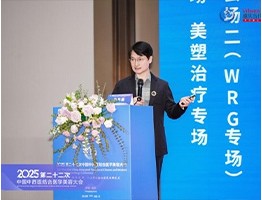 Dr. Sun Linchao: Pioneer and Leader in China's Field of Medical Aesthetic Laser Therapy
Dr. Sun Linchao: Pioneer and Leader in China's Field of Medical Aesthetic Laser Therapy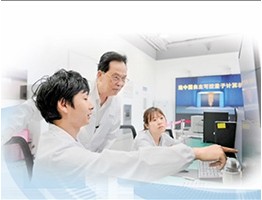 Guo Guangcan, CAS Academician & USTC Professor: Four Decades Chasing Quantum "Light"
more>>
Guo Guangcan, CAS Academician & USTC Professor: Four Decades Chasing Quantum "Light"
more>>

